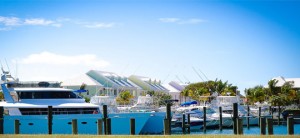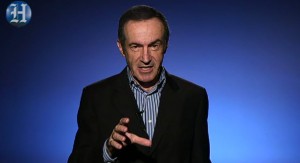
The Miami Conexion / Flying to the past. But why pay?
A news item invites you to return to the past by boarding the Tin Goose Tri-Motor, a plane built by Ford in 1929 that will be ready for take-off at Kendall-Tamiami Executive Airport. Quite an adventure, a return to the thrills of yesteryear for those who buy a ticket for a 15- or 20-minute ride.
It’s worth the adventure. But those who really wish to relive the past can save the $75; just tune in to any of Miami’s Cuban radio stations and you’ll be transported to the mid-20th Century while sitting comfortably and safely in your home. Bon voyage.
The Chinese, 180 kilometers from Florida
 They’re not soldiers but workers. They don’t come aboard battleships or aircraft carriers but they do bring a lot of money and equipment. Some 3,000 Chinese laborers have been issued permits to work in the ambitious tourist plan ongoing in the Bahamas. Capital and companies from the mighty Asian country are involved in the construction of hotels, golf courses and a fabulous casino with VIP rooms.
They’re not soldiers but workers. They don’t come aboard battleships or aircraft carriers but they do bring a lot of money and equipment. Some 3,000 Chinese laborers have been issued permits to work in the ambitious tourist plan ongoing in the Bahamas. Capital and companies from the mighty Asian country are involved in the construction of hotels, golf courses and a fabulous casino with VIP rooms.
What else? Well, anything the reader can think of. The idea is to turn the Bahamas into a world-class tourist center capable of competing with our Florida. Will they be able to beat the Sunshine State?
Everything except Chinese charades
A report from the American Enterprise Institute and the Heritage Foundation says that China has invested about $89 billion in South America. With the exception of Chinese charades — a kind of lottery that is legal in some countries, illegal in others — the smiling and hard-working Chinese have invested in everything: industry, tourism, infrastructure, telecommunications, biochemistry. Wherever they see a niche, they fill it.
Meanwhile, we in Washington amuse ourselves by helping to destabilize processes that could open opportunities for investment and influence. The Chinese move closer, we retreat farther away.
Oppenheimer, the frustrated seer
Andrés Oppenheimer, who in the mid-1990s prophesied Fidel Castro’s final hour, is now opining about the validity and significance of the survey made by The Atlantic Council that reflected that a significant majority of Americans favor restablishing relations with Cuba. He does it well, in a Cantinflas-like manner but without the Mexican comedian’s spark. Oppenheimer is not funny but pitiful.

To discredit the survey — sidestepping the importance of The Atlantic Council and its leaders — Oppenheimer says that it does not reflect the intention of the voters, whom he describes as “likely” voters (90 percent of the respondents are registered). The analyst-prophet-seer knows perfectly well that the survey did NOT seek the voters’ intention but their opinion on the subject, but he needed to write something to reduce the survey’s impact.
Oppenheimer also knows that, since the mid-1990s, the Bendixen and Associates pollsters and Florida International University have been doing opinion studies on this subject and others related to it, and that the results at election time (especially the most recent presidential elections) have proved the opinion studies right: the reality and the attitudes have changed.
Another discovery is that the blockade will not be lifted. Of course not, it depends on the legislative power, although other issues will be eased. Because he knows this, he ends by saying that “let’s hope” that other modifications will be made (flexibility will be shown) regarding Cuba.
The erratic prophet is no fool and, like anyone else, can associate statements from Obama, Kerry, Fanjul and others with the Atlantic Council survey to conclude that everything is part of a move as gradual as the process of change in Cuba. But he doesn’t say so. He clings to the “let’s hope” to look good in the face of the likely gradual change.
“Where should I stand?” Cantinflas might ask himself. “Well, neither here nor there but on the other side, which is not the same but turns out the same,” the quaint Mexican would answer himself.
Progreso Semanal/ Weekly authorizes the total or partial reproduction of the articles by our journalists, so long as source and author are identified.


